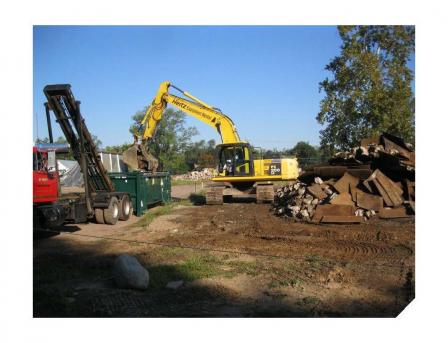Waste Management
Natural disasters are occurring with increasing frequency, generating volumes of waste and debris that are difficult for states, local governments, tribes and territories to manage. Incidents involving extremely dangerous contaminants (e.g. chemical, biological, radiological, or nuclear (CBRN)), would create significant additional challenges in waste management.
 Waste generated as part of a remediation operationWaste management challenges following a CBRN incident include:
Waste generated as part of a remediation operationWaste management challenges following a CBRN incident include:
- minimizing the amount of waste generated during cleanup
- segregating waste types
- waste treatment
- temporarily storage
- packaging and transporting waste
- disposing of waste and debris
Throughout the incident response and clean-up, wastes must be characterized to minimize human exposure to contamination and to determine how and where to ship, treat and/or dispose of contaminated materials. Response to a large scale incident is difficult because activities are interrelated. For example, a choice in decontamination approach has an impact on the timeline of the cleanup as well as the cost and the amount of waste generated. Decision makers must be aware of the trade-offs involved in their decisions to optimize the response.
For CBRN incidents these complexities are compounded by:
- Lack of a federal regulations for managing biologically-contaminated waste
- Limited disposal capacity for radiologically-contaminated waste
- Lack of experience of decision makers and waste management facilities in handling these wastes
- Hesitantcy on the part of some disposal facilities to accept these wastes
For more information on managing waste from disasters please go to EPA’s Managing Materials and Wastes for Homeland Security Incidents website.
To support these challenges, Homeland Security Research Program (HSRP) develops methods for managing solid waste and contaminated water, including waste minimization, treatment, storage and disposal. HSRP also develops tools and information to support waste management decisions.
